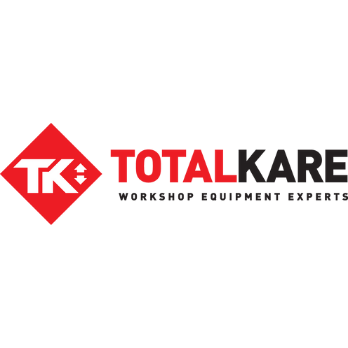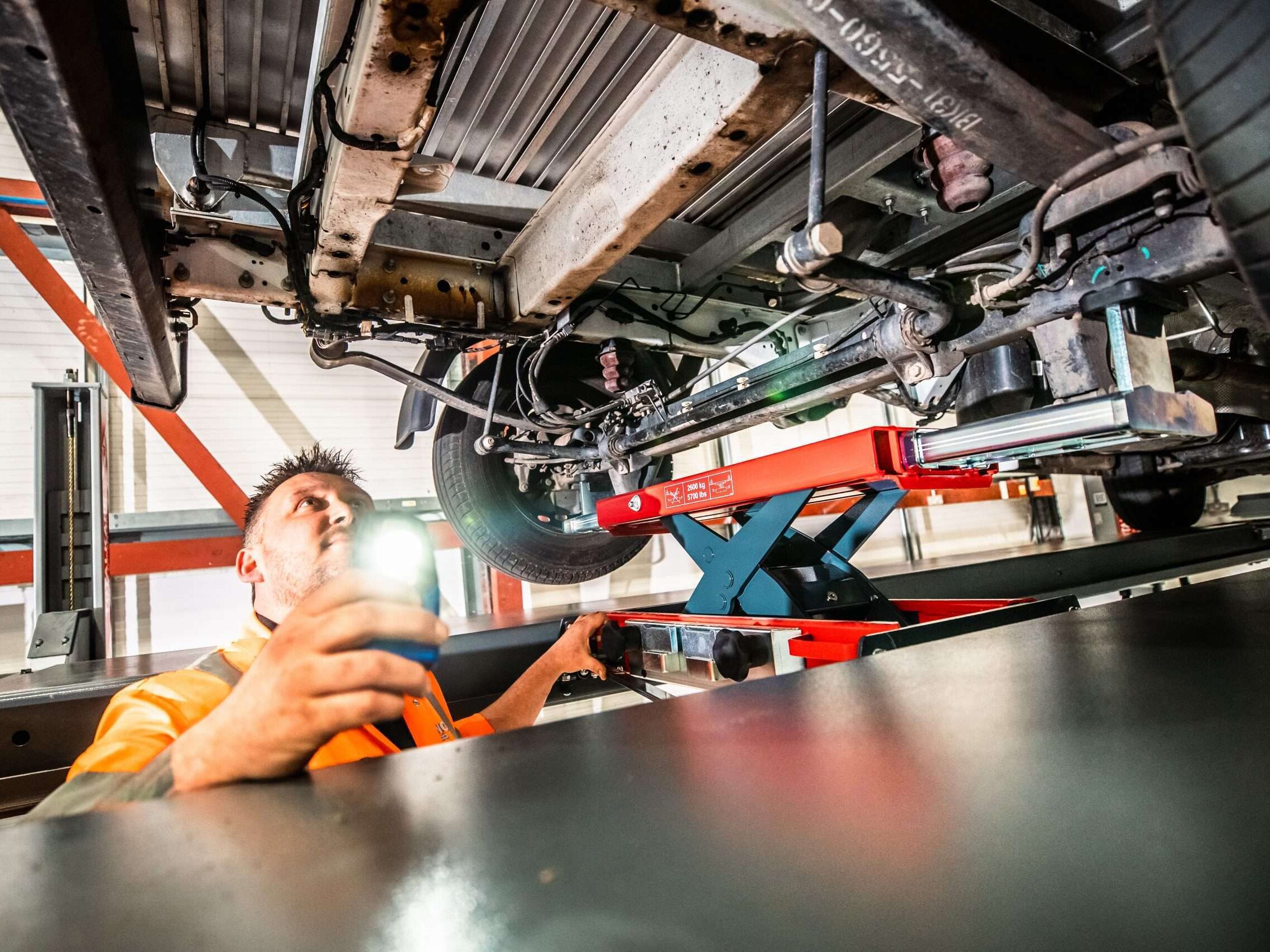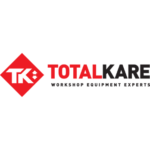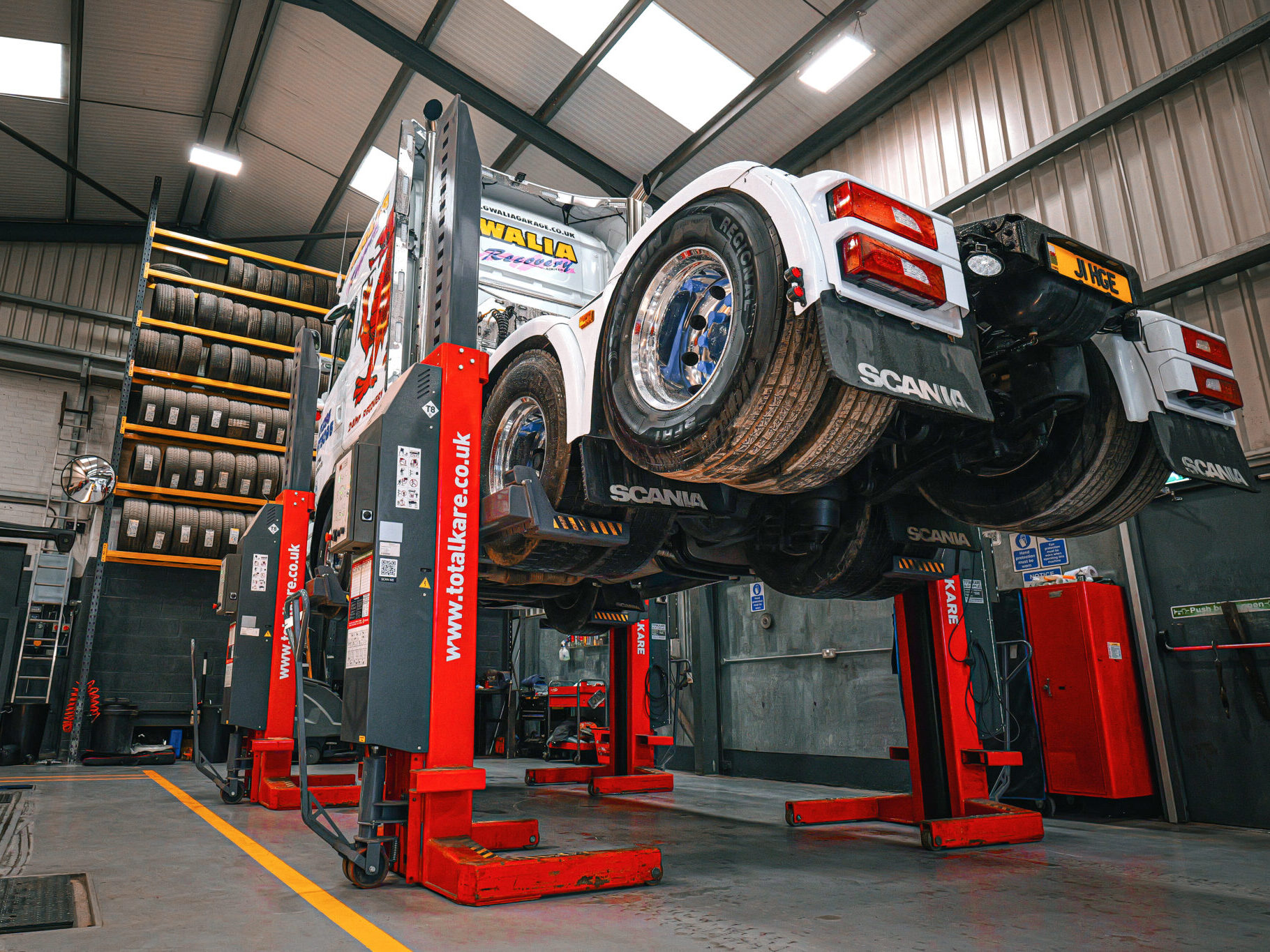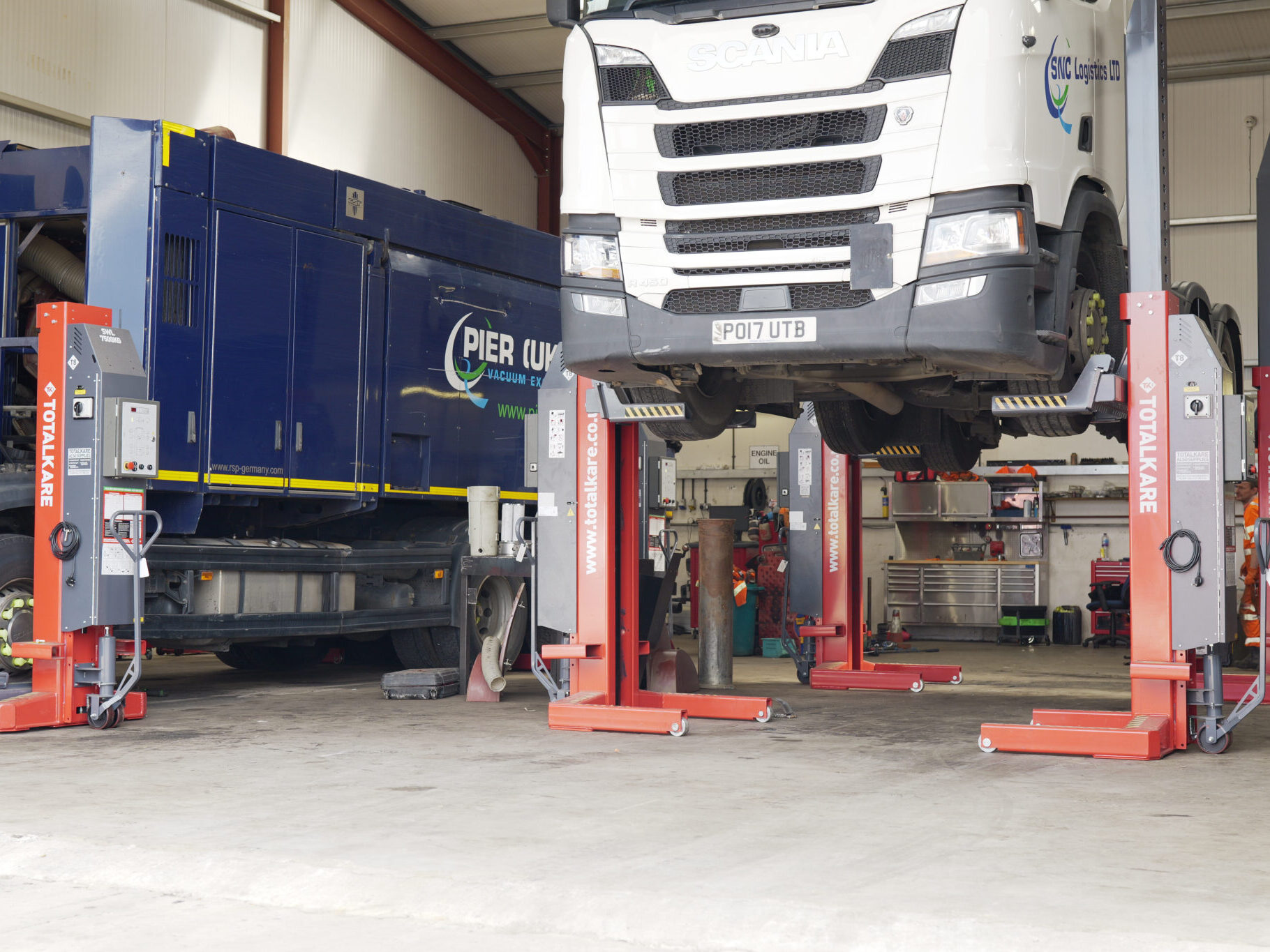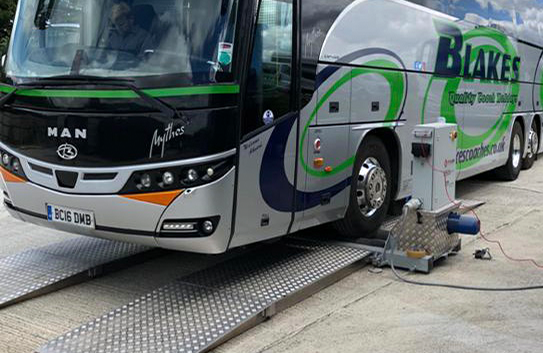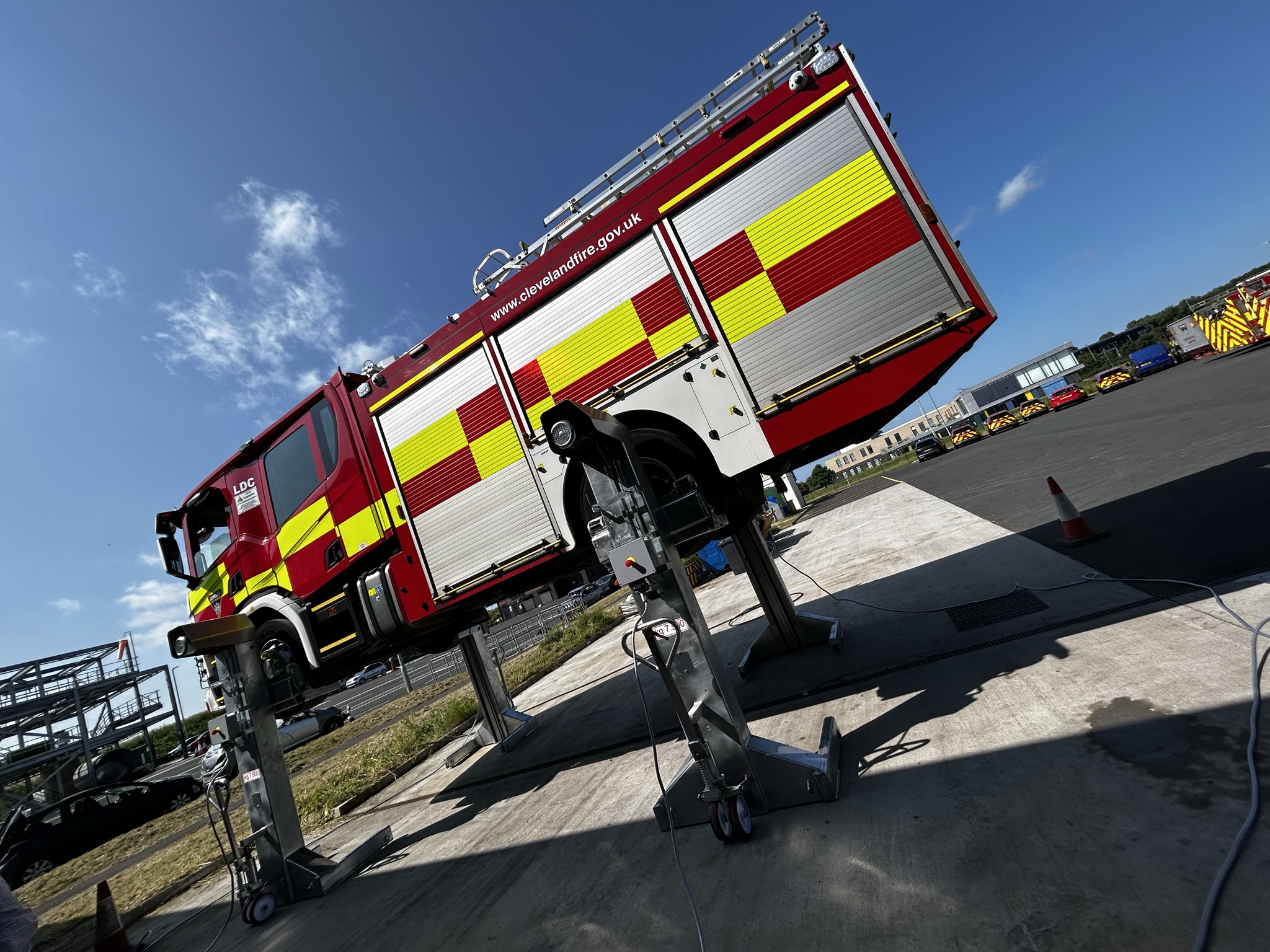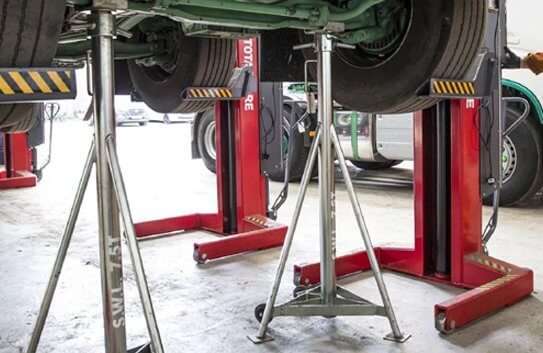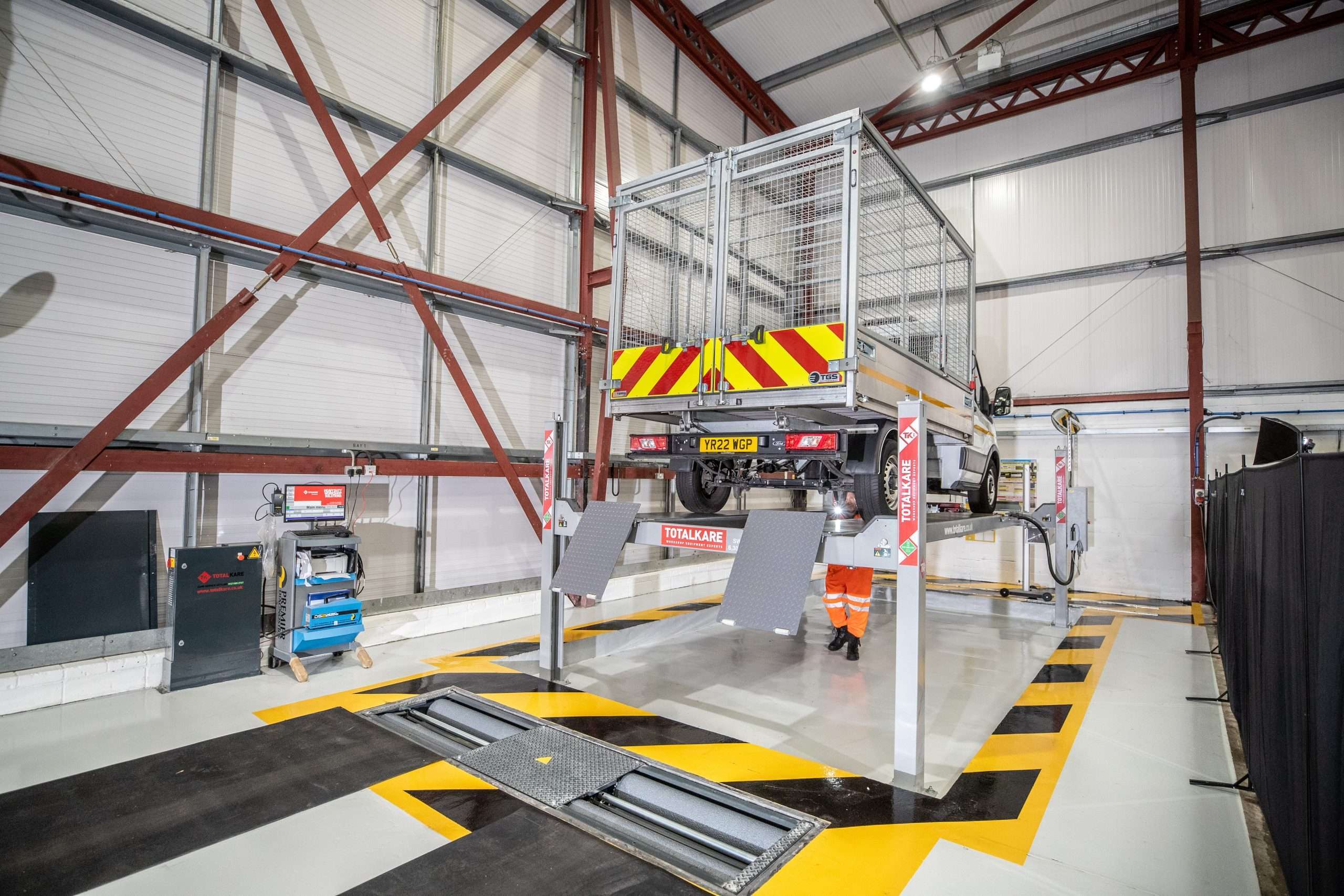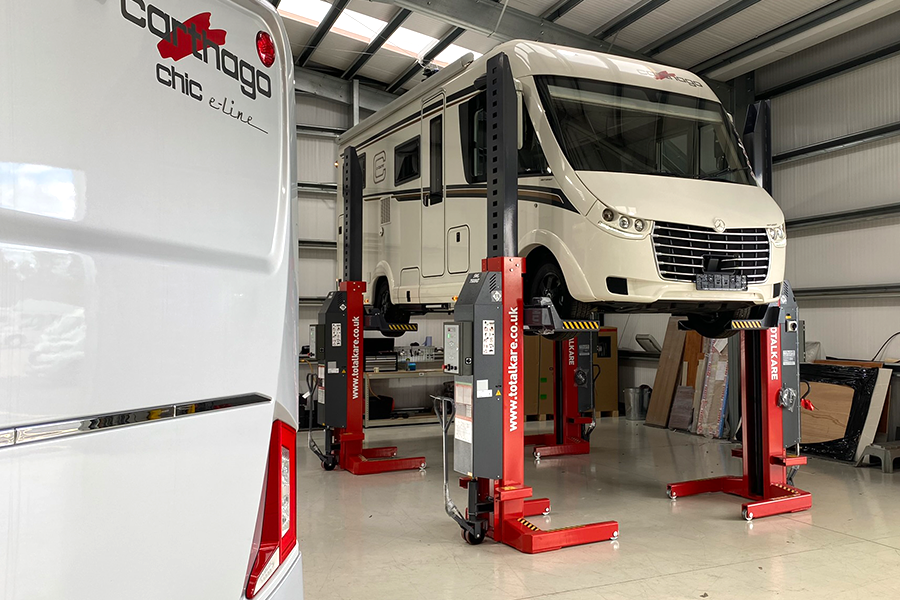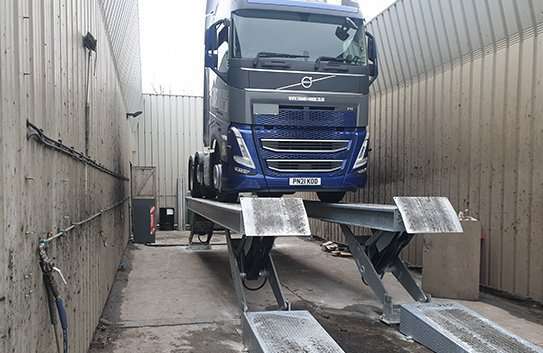If you’re running a larger fleet, fuel economy should be one of your top priorities.
And there’s one service for your vehicles that can help you directly with that — a service that’s often overlooked, and often misunderstood.
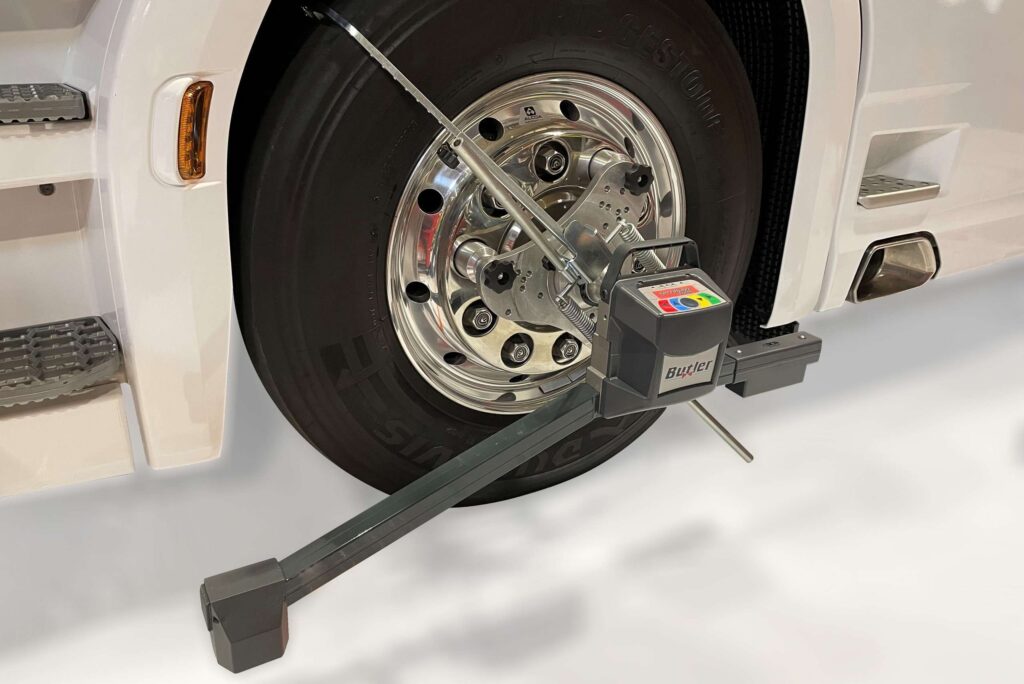
Here’s what you need to know about wheel alignment — how it works, what you’re looking for, and how the right gear can help you save money on your services.
Is Wheel Alignment Different from Wheel Balancing?
We’ve talked before about the differences between wheel alignment and wheel balancing. But if you’re looking for the quick answer:
Wheel alignment and wheel balancing are two completely separate services — with different tests, different equipment, and different goals.
Wheel balancing is about adjusting the distribution of weight inside the wheel to correct imperfections, using a dedicated Wheel Balancer that rotates the wheel and measures how it moves using optic sensors.
Wheel alignment is about adjusting the suspension — measuring the different angles of the wheel and how it connects to the vehicle and getting the optimal angles for smooth and efficient driving.
What’s Being Tested in a Wheel Alignment Service?
There are three main angles that a wheel alignment service is looking for — and they’re all related to the orientation of the wheel, and how it connects to the vehicle’s suspension.
1. Camber
Camber is the vertical angle of the wheels themselves — the inward or outward tilt that you would see if you were looking at the wheels from the front of the vehicle.
It’s the vehicle equivalent of trying to walk with your knees pushed together (or pointing outwards). It’s not efficient, and it’s putting unnecessary strain on your suspension and steering system.
If your vehicle has an inward tilt (where the tops of your tyres are closer together than the bottom), it’s called a ‘negative camber’.
And if you’ve got an inward tilt (where the tops of your tyres are further apart than the bottom), it’s called a ‘positive camber’.
In either case, you’ve got poor wheel alignment — and you’ll need a service to correct it.
2. Toe
Toe is similar to camber — except instead of seeing the angle from the front of the vehicle, you would see it looking down from the top of the vehicle.
It’s the equivalent of looking down at your feet and pointing your toes towards or away from each other — and then trying to walk. This inward or outward tilt causes extra strain on your suspension and reduces the efficiency of how your vehicles drive.
With an inward tilt (where the front of your tyres are pointing to the centre of the vehicle), it’s called a “toe-in alignment”.
And with an outward tilt (where the front of your tyres are pointing away from the centre), it’s called a “toe-out alignment”.
And in either case, you’re going to need an adjustment.
3. Caster
Caster is slightly different from camber and toe, in that it’s not concerned with the angle of the wheels themselves. Instead, it’s about the angle of the steering axis as you would view it from the side of the vehicle.
It’s the vehicle equivalent of pushing your hips forwards or backwards — leaning forwards over your toes or leaning backwards on your heels. It’s not an efficient way to walk, and it’s not an efficient way to drive.
If your steering axis is leaning back from the centre, it’s called a ‘positive caster’. And if your steering axis is leaning forward from the centre, it’s called a ‘negative caster’.
What Equipment Do You Need for a Wheel Alignment?
If you’re looking for a quick and simple way to carry out wheel alignment services, there’s only one reliable answer:
And that’s an Electronic Wheel Alignment System.
Our Totalkare Wheel Alignment System uses two front and rear measuring heads to sense the angle of your wheels in the positions you need — with infrared communication between the two heads, and Bluetooth communication between the heads and the control unit.
It’s an all-in-one piece of kit that’s easy to use and completely mobile. So, you can use it in any workspace in your workshop — whether that’s with an inspection pit, a vehicle lift, or just on your shop floor.
And the best part?
When you invest in your own in-house equipment, it pays for itself in the long term.
Without the repeat costs of outsourcing your tests (or the wasted time with your vehicles out of action), you can conduct your own wheel alignments as frequently as you need — and on as many vehicles as your fleet can hold.
Want to Know More about In-House Wheel Alignment?
Whether you’re a busy workshop or a larger fleet, bringing your equipment in-house is one of the wisest decisions your business can make.
And if you’re looking to make smart decisions, we’ve got the smart kit to help you get there.
Check out our accurate and reliable Electronic Wheel Alignment System in our online shop — or talk to one of our workshop experts to get all the details you need.
This article was originally published by Totalkare Ltd.

